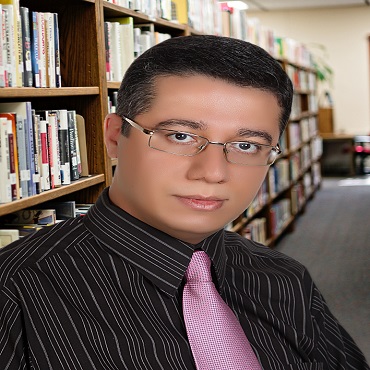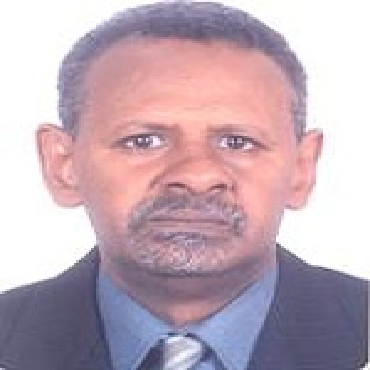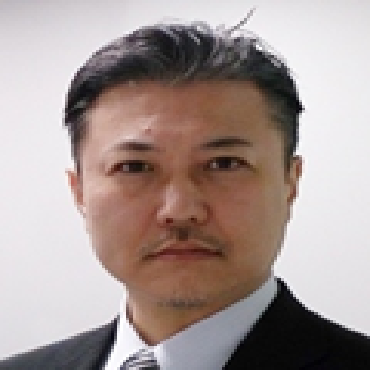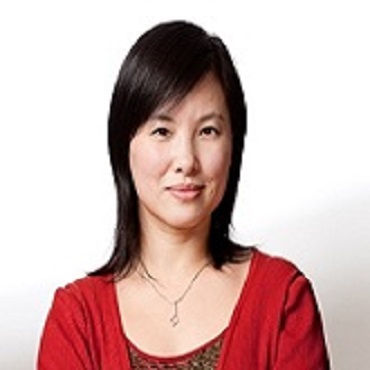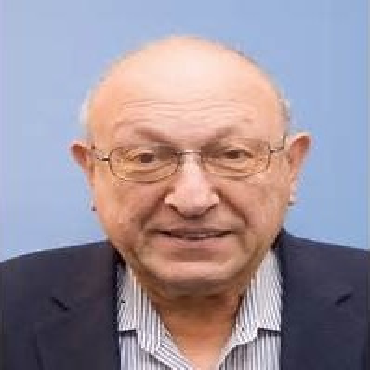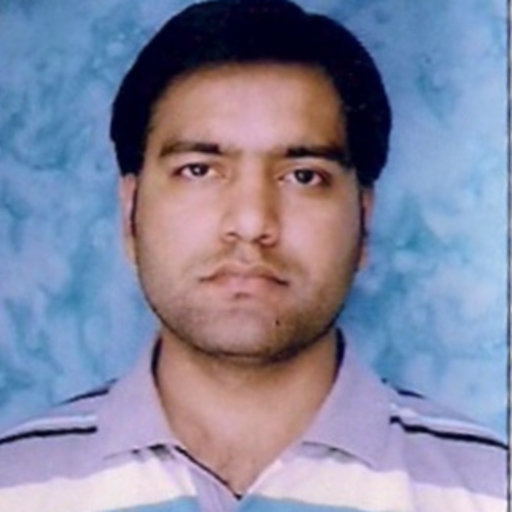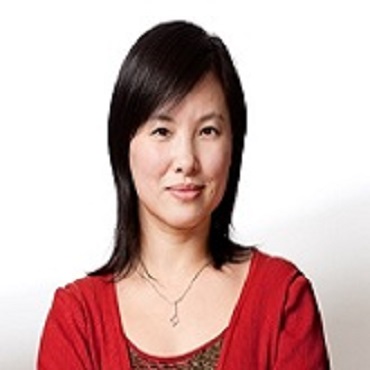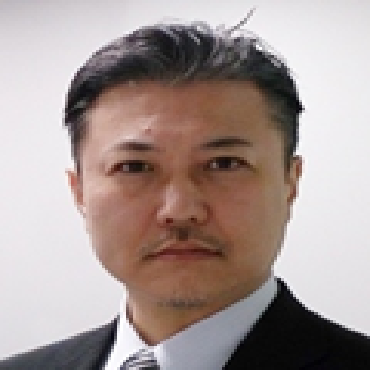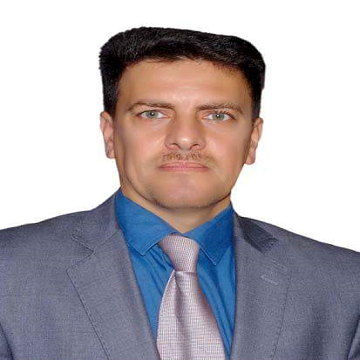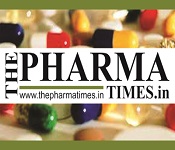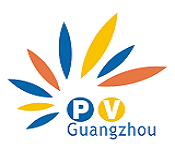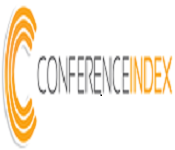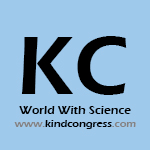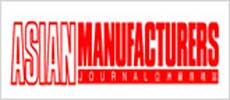
Smart Materials 2020

Theme: Emerging progress in smart content applications
"13th International conference on Smart Materials and Polymer Technology" organized in Paris, France during February 19-20, 2020. Smart Materials 2020 initiates an as well as the novel applications of smart emerging materials in materials science. Content science professionals gathered around the world to learn about the latest developments and innovations as well as novel applications of smart emerging materials. Smart Materials & Polymer Technology Conference 2020 is a 2-day program that offers exhibition at the venue to display new and emerging technologies and has extensive sessions in which the main Keynote presentation, YRF (student presentation), Oral, Posters, E-poster presentations. To share their valuable presentation on the most recent and advanced techniques, development and latest updates, a world-renowned speaker and prominent representative representatives from all over the world participate in the conference. On that note, Smart Materials Conference 2020 invites all interested participants to this prestigious event in the grand destination Paris, France
Â
Session-1: Emerging Smart Materials
The medieval era where stone, bronze, steel was used, now ceramics, minerals developed, from which metallurgical fields were born. Research on metals, alloys, silica and carbon manometry has been researched in physics, chemistry, thermodynamics and many other areas of science. Material Science has now revolutionized the metals and alloys from semiconductor, plastic, biomaterials, rubbers, polymers, magnetic materials, medicinal implant materials, nanometers, etc. And it has not stopped yet! Smart structures are tools made from smart materials capable of feeling stimuli, respond to it and return to their original state after removing the stimuli. Self-healing materials, magnetic and thermoelectric materials, polycaprolactone are emerging smart structures, etc.
Smart Materials Conference | 3-D Printing Smart Materials Congress| Smart Materials Conference | Polymer Technology Seminar | Materials Engineering & Science Summit | Carbon nanotubes Conference | Smart Materials & Polymer Technology Conference
Session-2: Materials and Science Engineering
The discipline of science emerged by the fusion of scientific discipline, ceramics, natural philosophy, and chemistry is that the field that deals with identification, study, and style of materials. To grasp associate in nursing ancient development in geology and metals, researchers combined the information of physics, chemistry, and engineering that led to the event of a replacement field in science particularly Material Engineering or Material science. The bonding nature, shape, form, magnetic, chemical, optical, electrical, thermal, physical and a number of other properties of cloth is discovered and studied during this field. The discipline is vital each from an inquiry perspective, additionally as from associate in nursing industrial one.
Smart Materials and Structures | Smart Materials and Surfaces | Materials Science Conferences | Materials events | Materials Conferences | Materials Engineering | Materials engineering conference | carbon nanotubes conference | Piezoelectric conference
Session-3: Carbon Nanotubes, Graphene and Composites
Carbon has long progressed from a component to diamond, graphite, carbon nanotubes and grapheme. Carbon Nanotubes are carbon allotropes with a cylindrical nanostructure and weird properties finding applications in physics, applied science, and optics. Graphene is another carbon chemical element with a polygon lattice structure having many sorts like Bi-layer grapheme, Penta-graphene, etc. Majorly used as grapheme biosensors. Composites (Composite Materials) are materials shaped by a mixture of two or additional materials to possess higher characteristics compared to individual parts. Composite materials fabrication varies for various composites like Nano composites, Textile composites, etc.
Piezoelectric Materials Ceramics conference | Textiles Industries conference | Polymer Science conference | Polymer conference | Material Chemistry Congress | Advance & Nanomaterials Conference | Materials Congress | Materials Science & Technology Conference
Session-4: Material Synthesis and Characterization
Manufacturing materials with desired structure and properties involves the employment of many totally different process steps. As a cloth investigator, the structure, property, and process of the fabric (Materials Paradigm) should be legendary. The fabric can't be factory-made in business and marketing if no economical and qualitative production technique for it's been developed. Thus, the process of materials is significant to the sector of materials science. The material's paradigm helps in rhetorical engineering, failure analysis, and investigation of aviation accidents. Recently many sensible materials have emerged through new production ways or changed synthesis steps.
Materials Chemistry & Science Nanotechnology Conference | Nanosensors & Electronic Instruments | Nanophotonics & Electronics | Biopolymer & Bioplastics Conference | Sustainable Development & Society | Plastic & Aesthetic Surgery Conference
Session-5: Optical, Magnetic and Electronic Materials
Optics, magnetic and electronic content research combines the principles of many fields of science such as solid state physics, chemistry, materials science, electronic and chemical engineering. Magnetic materials will be employed in research and data storage, super magnetism and spintronics, while electronic content will receive application in the form of electrics, nanometer/photonic material and pseozoillectric in electronic, semiconductor and energy industries. Their optical properties have been modified to meet the demands of energy conservation, national security and commercial sector in different materials like glass, ceramics, electrics, semiconductors, nanopromocytes and polymer fibers.
Smart Materials and Structures | Smart Materials and Surfaces | Materials Science Conferences | Materials events | Materials Conferences | Materials Engineering | Materials engineering conference | carbon nanotubes conference | Piezoelectric conference
Session-6: Nanotechnology
Nanotechnology is rapidly evolving and is merged with the field of Materials Science. Nanotech-level smart materials or nanomaterial’s synthesis can have different properties for finding healthcare, construction, and material applications in the material industry. Nanotechnology is rapidly evolving and it has been mixed in the field of materials science. Nano-level smart materials or nanometers to synthesis materials industry can have different properties to find healthcare, construction, and content applications.
Piezoelectric Materials Ceramics conference | Textiles Industries conference | Polymer Science conference | Polymer conference | Material Chemistry Congress | Advance & Nanomaterials Conference | Materials Congress | Materials Science & Technology Conference
Session-7: Piezoelectric Materials and 3-D Printing
Piezoelectric materials are smart materials which accumulate electric charge across the material surface upon mechanical stress and this charge can change the shape of the material. Some of these materials are ceramic, quartz, quantum dots, etc. These electronic materials are used as sensors and actuators in the automotive industries. Rapid prototyping, 3dimensional (3D) printing or additive manufacturing (AM) of smart materials like smart nano composites, shape memory alloys, ceramics, shape memory polymers, actuators for soft robotics, self-evolving structures, anti-counterfeiting system has been going on and 4D printing has also come into picture to include the structural reconfiguration of materials over time.
Materials Chemistry Conference | Nanotechnology Conference | Nanosensors & Electronic Instruments | Nanophotonics & Electronics | Biopolymer & Bioplastics Conference | Sustainable Development & Society | Plastic & Aesthetic Surgery Conference
Session-8: Materials in Healthcare
The explore for ideal restorative material for medicine gave hope for applications of sensible materials in dental science. Sensible materials are materials whose properties may be altered during a controlled fashion to support the tooth structure. Sensible biomimetic materials will mimic enamel or dentin. The employment of sensible materials like sensible composites, sensible ceramics, resin-modified glass monomer, amorphous phosphate emotional pit and fissure sealants, dentistry form memory alloys, sensible impression material, sensible suture, smart burs, etc. have revolutionized medicine and maximized the advantage of standard restorative techniques. Sensible materials have conjointly found their applications in health care sectors as implants, biosensors, etc.
Smart Materials and Structures | Smart Materials and Surfaces | Materials Science Conferences | Materials events | Materials Conferences | Materials Engineering | Materials engineering conference | carbon nanotubes conference | Piezoelectric conference
Session-9: Market Demand and Future
Smart materials and structures market is expected to cross more than $40billion in the upcoming years and the market is segmented by products, end-user industry applications, and geography. In the industries, R&D investment, government assistance, research and defense in many universities and adopt smart content products in many areas such as aerospace, automotive, healthcare, and consumer electronics has led to the market of smart goods. There are many promises in many areas of applications such as energy, architecture, textiles, ceramics, automotive, aerospace, equipment, medical and electronics industries in the future for these emerging materials.
Piezoelectric Materials Ceramics conference | Textiles Industries conference | Polymer Science conference | Polymer conference | Material Chemistry Congress | Advance & Nanomaterials Conference | Materials Congress | Materials Science & Technology Conference
Session-10: Ceramics and Textiles Industries
The earlier brittle materials that were exhausting and robust in compression and weak in tension and cutting were ceramics. To improvise their properties, good materials were incorporated into them that semiconductor diode to the event of good ceramics that area unit ceramic materials fictional from ultrafine particles victimization the sol-gel route, good ceramics realize applications in bone surgery, tissue engineering, dental applications, bio imaging, sensors, paints and pigments, optics, and natural philosophy, drug, and substance delivery.
Materials Chemistry Conference | Nanotechnology Conference | Nanosensors & Electronic Instruments | Nanophotonics & Electronics | Biopolymer & Bioplastics Conference | Sustainable Development & Society | Plastic & Aesthetic Surgery Conference
Session-11: Polymer Science and Engineering
Polymer science and engineering is the field of science that studies the synthesis and applications of chemical compound materials (polymers). Crystallization and polymerization of polymers, chemical compound engineering science, materials science and physics study and apply chemical compounds in many applications like lithium-ion polymer battery (LiPo), electro active polymers, chemical compound brush, self- assembled chemical compound films, chemical element nano spheres, collagen, enzymes, elastin, cellulose, chitin, plastics, fibers, and adhesives. Sensible materials like electricity materials, self-healing, and from memory polymers have additionally return underneath analysis during this field.
Smart Materials and Structures | Smart Materials and Surfaces | Materials Science Conferences | Materials events | Materials Conferences | Materials Engineering | Materials engineering conference | carbon nanotubes conference | Piezoelectric conference
Session-12: Sustainable Energy and Development
Depletion of natural resources and a worldwide increase in population has created a worldwide demand for energy. Materials hope for renewable energy sources, super capacitors, energy storage in batteries, thermo electrical devices, energy conversion through star cells and fuel cells. For the growing would like for production and energy storage, systems as well as numerous materials, operations and properties are used, for instance, batteries like atomic number 3 batteries area unit employed in numerous kinds of mobile devices, as well as installation, computers, recreation devices, power tools, toys, games, lighting, and medical devices. Semiconductor devices have replaced vacuum tubes and from these semiconductor materials diodes, transistors, light-weight emitting diodes (LEDs) have emerged for energy efficiency.
Piezoelectric Materials Ceramics conference | Textiles Industries conference | Polymer Science conference | Polymer conference | Material Chemistry Congress | Advance & Nanomaterials Conference | Materials Congress | Materials Science & Technology Conference
Market Research:
Smart Materials and Polymer Technology 2020 are the global smart materials market size was valued at USD 32.77 billion in 2016 and is anticipated to expertise sturdy growth at a CAGR of 13.5% from 2017 to 2025. They exhibit responsiveness in a very controlled manner to ever-changing environments. They need a molecular structure that permits them to retort to a good array of external stimuli, like electrical fields, magnetic fields, pressure, temperature, moisture, and chemicals.
Why to organize this conference:
Smart material and polymer technology conference area unit organize as a result of several edges of smart materials depend upon the actual fact that it's doable to tailor the structures of materials at extraordinarily tiny scales to attain specific properties, so greatly extending the materials science toolkit. Exploitation technology, materials will effectively be created stronger, lighter, a lot of sturdy, a lot of reactive, a lot of sieve-like, or higher electrical conductors, among several alternative traits. Several everyday business product area unit presently on the market and in daily use that have confidence sensible materials and processes.
Smart Material helps to significantly improve, even revolutionize, several technology and business sectors: data technology, Office of Homeland Security, medicine, transportation, energy, food safety, and biology, among several others. Delineated below could be a sampling of the chop-chop growing list of advantages and applications of technology.
Electronics and IT Applications: Smart materials has greatly contributed to major advances in computing and electronics, leading to faster, smaller, and more portable systems that can manage and store larger and larger amounts of information.
Medical and Healthcare Application: Nanotechnology is already broadening the medical tools, knowledge, and therapies currently available to clinicians. Nanomedicine, the application of nanotechnology in medicine, draws on the natural scale of biological phenomena to produce precise solutions for disease prevention, diagnosis, and treatment.
Energy Applications: Smart materials is finding application in traditional energy sources and is greatly enhancing alternative energy approaches to help meet the world’s increasing energy demands. Many scientists are looking into ways to develop clean, affordable, and renewable energy sources, along with means to reduce energy consumption and lessen toxicity burdens on the environment.
Environmental Remediation: In addition to the ways that Smart materials can help improve energy efficiency, there are also many ways that it can help detect and clean up environmental contaminants. Smart materials could help meet the need for affordable, clean drinking water through rapid, low-cost detection and treatment of impurities in water.
Future Transportation Benefits: Smart materials offers the promise of developing multifunctional materials that will contribute to building and maintaining lighter, safer, smarter, and more efficient vehicles, aircraft, spacecraft, and ships. In addition, Smart Materials offers various means to improve the transportation infrastructure.
Scope of conference:
Smart materials have several applications in numerous fields of medication and engineering and additionally the increase in demand for the good materials is enough to believe that there's a good scope for the good materials within the future. The event of true good materials at the atomic scale remains how off, though the sanctioning technologies area unit below development. Worldwide, considerable effort is being deployed to develop smart materials and structures and also the technological edges of such systems have begun to be known and, demonstrators area unit below construction for a good vary of applications from area and part, to engineering and domestic product these systems area unit recognized as a strategic technology for the longer term, having considerable potential for development of unknown product and performance improvement of existing product in industrial sectors that is that the way forward for smart materials and additionally creates several job opportunities during this sector.
Business value:
The global smart materials market is anticipated to succeed in USD 98.2 billion by 2025, in keeping with a report by Grand read analysis, Inc. in depth analysis & innovation activities have widened the economic applications of sensible materials. Increased use of sensible actuators & motors, sensors, and structural materials is anticipated to bolster the demand over consecutive few years.
Smart materials are advanced product, which might sense and answer a broad vary of stimuli, as well as electrical and magnetic fields, temperature, pressure, mechanical stress, hydrostatic pressure, nuclear radiation, and amendment. Distinctive properties of those product enable them to revert to their original state once removal of the stimuli.
Top global Universities in the field of Smart material:
- Nanyang Technological University
- Massachusetts Institute of Technology
- Stanford University
- Tsinghua University
- Harvard University
- Georgia Institute of Technology
- University of California--Berkeley
- Fudan University
- National University of Singapore
- Peking University
List of Universities in the field of Smart material in Europe:
- Universite Paris Saclay (ComUE)
- Communaute Universite Grenoble Alpes
- PSL Research University Paris (ComUE)
- Universite de Lyon (ComUE)
- Languedoc-Roussillon Universites (ComUE)
- University of Lorraine
- Communaute d'Universites et Etablissements d'Aquitaine (ComUE)
- University of Strasbourg
- Universite Sorbonne Paris Cite-USPC (ComUE)
- Universite Federale Toulouse Midi-Pyrenees (ComUE)
List of Universities in the field of Smart material in America:
- Universidade de São Paulo
- State University of Campinas
- Federal University of Sao Carlos
- UNESP - Universidade Estadual Paulista
- National Autonomous University of Mexico
- Federal University of Minas Gerais
- Federal University of Rio Grande do Sul
- Federal University of Santa Catarina
List of Universities in the field of Smart material in Australia/New Zealand:
- Monash University
- University of Wollongong
- University of New South Wales
- University of Queensland Australia
- University of Adelaide
- University of Melbourne
- University of Sydney
- RMIT University
- Deakin University
- Curtin University of Technology
List of Universities in the field of Smart material in Asia/Africa:
- Nanyang Technological University
- Tsinghua University
- Fudan University
- National University of Singapore
- Peking University
- Shanghai Jiao Tong University
- University of Science and Technology of China
- Seoul National University
- Zhejiang University
- Soochow University
- Universite de Sfax
Members Associated with Materials Science:
Research Positions:
- Research Associate
- Research Scientist
- Bitumen Research Associate
Apart from the industrial personnel where most of the research work is done, other research communities include:
- Academicians include Student community
- Researchers include Post docs, Research Associates
- Scientists include Professors, Associate professors and Assistant professor
- Industries include Presidents, CEO’s and R&D Managers
Major Materials Science Associations around the Globe:
- American Chemical Society (ACS)
- American Physical Society (APS)
- The Materials Information Society (ASM International)
- Microscopy Society of America (MSA)
- The Minerals, Metals & Materials Society (TMS)
- Sigma Xi: The Scientific Research Society
- International Society for Optical Engineering (SPIE)
- The American Ceramic Society (ACerS)
- International Association of Advanced Materials(IAAM)
Market Growth of Materials Science in the last and upcoming five years:
The global market is projected to achieve $6,000 million by 2020 and register a CAGR of 10.2% between 2015 and 2020 in terms important . the expansion within the market is calculable to be driven by the increasing demand for aerogel materials from oil & gas and construction applications. The North yank region remains the most important market, followed by Asia-Pacific. The Europe market is calculable to be growing at a gentle rate because of economic recovery within the region at the side of the increasing concern for the building insulation and energy savings.
References:
- https://www.marketdataforecast.com/market-research
- https://www.grandviewresearch.com/
Conclusion:
- Smart materials are able to sense and respond to environment around them. They have the potential to improve existing technology and add new functionality to products. They have applications in a wide variety of areas and they have an waste reduction important role in waste reduction.
- They have a capability to work in multifunctional way. Although Smart materials and systems have been researched for decades, commercial exploitation has been slow. The interdisciplinary nature of the subject and divide between scientist and designers has slowed this exploitation.
- Thus we conclude that there is an important role of smart materials in our life.
The lasers market is expected to grow at a moderate rate during the forecast period, 2018 to 2023. Asia-Pacific is estimated to lead the market, owing to the growing demand from medical industry. Electronics is estimated to be the largest end-use industry for lasers.
The worldwide laser market will proceed with its intense development in the coming years, as per various reports, the innovation propels industry wide. While this development is occurring around the globe, the Asia-Pacific (APAC) locale is relied upon to see the speediest extension.
Parallel to far reaching mechanical advancement, the laser processing showcase is exhibiting strong development in assembling, broadcast communications and buyer hardware particularly in the APAC area.
A few statistical surveying organizations quality this strong improvement, to progresses in and interest for innovations in the assembling division. Laser parts and frameworks progressively are being discovered and are producing applications. In particular, laser innovation has started supplanting conventional machine instruments in assembling applications, as ease fiber lasers and mechanical pulse lasers are being created.
The anticipated extension in the following quite a long while of telecommunications into the biggest end-utilize segment of the photonics business can be credited to a rising interest for optical filaments. Optical fibres are rapidly ending up more prominent than customary metallic wires, as they exhibit more prominent wellbeing and security, media communications and data innovation is inciting new advancements in locales, for example, China and India.
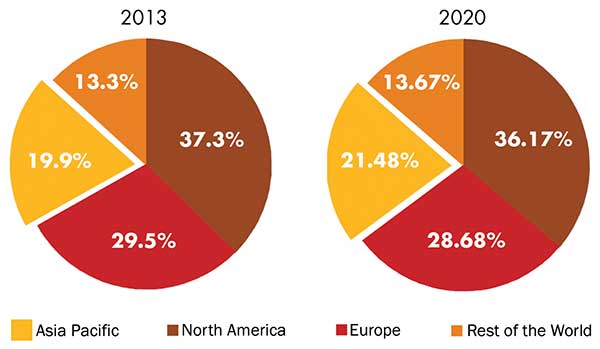
Developing interest in R&D crosswise over APAC is driving the microscopy gadgets advertise, similar to the development of colleges and research establishments there. An expanded concentrate on nanotechnology has turned into a driving element in this market portion, and development of the electronic and sustainable power source enterprises has supported the interest in microscopy gadgets in semiconductor applications. The high determination limit of such gadgets is driving R&D propels in neuro science and neurology. The expanding utilization of electron and examining test magnifying lens is further impelling the microscopy gadgets advertise section.
The market for photonic incorporated circuits (PICs) is quickly developing as a noteworthy industry area. The pivotal innovation is changing optical systems around the world. According to Markets and Markets, this fragment will reach $1.5 billion inside the following five years. And keeping in mind that North America held the reins for the PIC section in 2015, APAC has developed as a solid area with brisk market development expected by Statistics Market Research Consulting. As per Markets and Markets, APAC ought to wind up plainly the PIC showcase pioneer by 2022, developing every year by 26 percent.
The IR identifiers advertise is another in which APAC should see quick, critical development throughout the following five years. Unified Market Research found that China, specifically, has the greatest market for IR indicator makers and customers. Generally speaking, the market in APAC is being encouraged by security concerns, producing industry exercises and expanded uses in developing markets, for example, Japan and India.
From bio and medicinal applications to resistance and security, the photonics showcase in all fields is surging, as the Asia-Pacific area turns into the "biggest and quickest developing business sector for photonics," as per advertise specialists. Also, there are no signs it will back off at any point in the near future. The photonics and lasers showcase development in APAC is expected principally to three variables: quicker financial development in APAC than different districts of world, move in assembling to APAC, and an expanding utilization of lasers for assembling.
Electronics is expected to be the largest market
Lasers are used to manufacture electronic products, such as cell phones, microprocessors, display panels, and memory chips. These electronic products comprise of a large number of different materials, multiple layers of extremely low thicknesses, and very small features, which require advanced and high-precision manufacturing processes. To manufacture these complex components, use of laser materials has increased in the recent years in the electronics industry. In addition, expanding use of electronics by consumers, declining prices of electronics and increase in demand for various electronic products in households and offices is further driving the market for lasers in the electronics industry globally.
• Stanford University
• Harvard University
• California University
• University of Chicago
• Yale University
• The Ohio State University
• University of South Florida
• University of Central Florida
• Johns Hopkins University
• North western University
• Carnegie Mellon University
• Brown University
• University of Texas
• Georgia Institute of Technology
• The University of Warwick
• The University of Manchester
• Lancaster University
• The University of Edinburgh
• University of Cambridge
• University of Oxford
• University of Glasgow
• Newcastle University
• University of Liverpool
• Coventry University
• University off Portsmouth
• London Southbank University
• University of Suss
• University of Dundee
• Bangor University
• Tsinghua University
• Fudan University
• Shanghai Jiao Tong University
• Zhejiang University
• Nanjing University
• Huazhong University
• Shenzhen University
• Ural Federa University
• Edity Cowan University
• University of Tasmania
• University of Wollongong
• The University of Western Australia
• National University of Singapore
• The University of Sydney
• Novosibirsk State University
Global University and Research Centres
• Center for Photochemical Sciences
• Center for Advanced Materials Research
• Centre for Manufacturing Metrology
• University of California at Berkeley
• Center for Optics, Photonics and Lasers
• Centre for Laser Processing of Materials
• Centre for Sensors, Instruments and Systems Development
• Center for Optical Materials Science and Engineering Technologies
• Center for Electronic Imaging Systems
• Physics and Optical Engineering
Global Association & Societies:
• Optical Society of America
• National Society of Black Physicists
• The International Society for Optics and Photonics
• Ontario Centre of Excellence for Photonics
• Laser Institute of America
• American Society for Laser Medicine and Surgery
• New Mexico Optics Industry Association
• Florida Photonics Cluster
• Academy of Infrared Training Bellingham
• Academy of Laser Dentistry
• Radiological Society of North America
• Association for Advancing Vision + Imaging
• Association for the Advancement of Medical Instrumentation
• American Society for Photogrammetry & Remote Sensing
• American Society for Precision Engineering
• The American Precision Optics Manufacturers Association
• Finnish Optical Society
• Danish Optical Society
• Italian Physical Society
• French Physical Society
• Advanced UV for Life Berlin
• European Physical Society
• Society of Physics Students
• Ualbany Society of Physics
• European Society of Laser Aesthetic Surgery
• International Centre for Theoretical Physics
• European Organization for Nuclear Research
• International Union of Pure and Applied Physics
• The Regional Center for Next Generation Manufacturing
• Indian Laser Association Optical Society of India
• Taiwan Optics/Optronics Manufacturers Association
• Photonics Industry & Technology Development Association
• Australian Optical Society
• The Japan Society of Applied Physics
• Bangladesh physical society
• Physical society of Japan
• Korean physical society
• Chinese physical society
• Nepal physical society
• Association of Asia pacific physics
Meetings International recognizes the commitment and amazing work in all fields of academics and research. By recognizing their contribution; Meetings International inspires and motivates scholars, researchers and academics by awarding the best YRF and Researcher Awards in all academic disciplines and categories along with other specific awards. These awards include prestigious Certificate of Award with other gifts.
To be eligible for the award Students interested in having their posters considered for the Smart Material 2020 conference, they must have submitted an abstract of their poster to the Conference. The award committee will consider all posters that relate to the study of public opinion, whether they focus on theory, substantive findings, research methods, and/or statistical techniques used in such research. All posters will automatically be considered for the Poster Award and the posters will take place in the conference venue and Poster Judges will select the best posters. The winners will be formally announced during the closing ceremony. The winners will receive a certificate award.

Smart Material 2020 gives the opportunity to young researchers in the different field of conferences. The best participants are selected as per their research abstract before the conference. If you are a young and dynamic researcher than you can join our conferences to explore new idea and research. A panel of judges will select the best YRF. Best YRF will be recognized publicly at the end of the conference. The Best YRF Award will be given to the most outstanding presentation presented by a participant who has registered under the student category. Undergraduates, Master students, and Ph.D. students will be considered under this category. Selection of the YRF will be made on the basis of the participant contribution in the respective research field each submission will be accepted based on the sessions of the conference. Irrelevant submissions will be rejected. The acceptance and rejection of abstract submissions will be selected by the committee. All submissions will go through a quality checking. Final approved abstract will consider for YRF award.
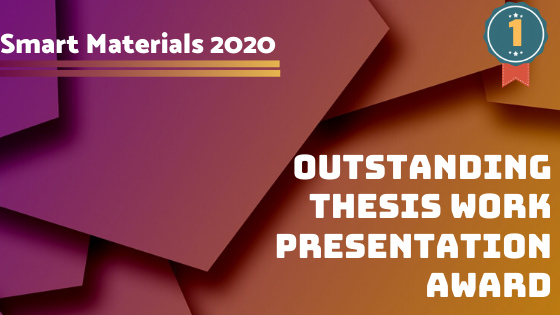
Smart Material 2020 chooses a relevant keynote speaker to speak at conference. All accepted keynote speakers proposals will be considered for the Best Keynote Speaker Award. The committee will select a number of candidates for the award among the accepted proposals. The winner will be selected at the conference, taking into consideration both the proposal and the presentation. Best keynote speaker can help to boost motivation, change their way of thinking and make audience energized and inspired. For Keynote the person should be eminent or highly affiliated like Dean, Professor, HOD, Chair persons, CEO, CFO, MD etc. Selection of the Best Keynote Speaker will be made on the basis of the participant contribution and years of experience in the respective research field. Each submission will be accepted based on the quality of abstract and conference theme. Irrelevant submissions will be rejected .The acceptance and rejection of abstract submissions will be selected by the Organizing committee. All submissions will go through a quality checking. Final approved abstract will consider for Keynote award.
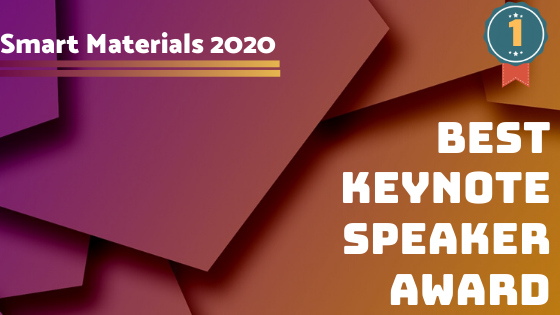
Smart Material 2020 believes in recognising our best speaker. The best speaker is selected as per their research abstract before the conference. All winners are determined by a selection panel. This award is designed to recognise and identify outstanding speakers who have achieved recent extraordinary eminence and success. Being an outstanding speaker means to deliver a message that engages an audience. The outstanding speaker award will also be given on the basis of organization and professionalism of presentation, communication skills of the presenter and appropriate use of time. Each session will be evaluated separately. For speaker the person should be Professor, Researcher, Scientist, Entrepreneur etc. .Selection of the Speaker will be made on the basis of the participant contribution in the respective research field. Each submission will be accepted based on the quality of abstract and conference sessions. Irrelevant submissions will be rejected. The acceptance and rejection of abstract submissions will be selected by the Organizing committee. All submissions will go through a procedure of quality checking by our team. Final approved abstract will consider for outstanding speaker award.
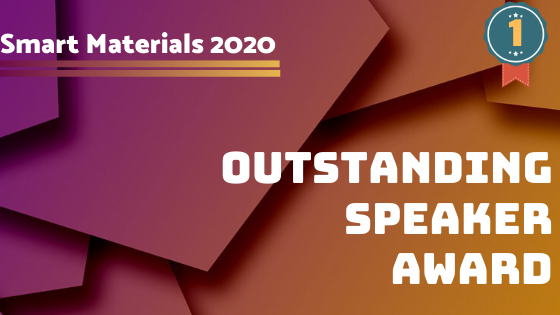
The organising committee can avail in the process of managing the multiple tasks that need to be done. Committee members, having a good erudition of the event management plan, are well placed to provide training, supervision and assistance to other personnel involved in the organisation of the event. Meetings International will honour as a best OCM the individual who has demonstrated their support and guidance throughout the conference. OCM should be eminent or highly affiliated like Dean, Professor, HOD, Chair persons, CEO, CFO, MD etc. . Selection of the best OCM will be made on the basis of the participant contribution and years of experience in the respective research field. Must have good number of research papers and citations. Should be more number of years of experience

-
Poster Size: Each poster should be approximately 1x1 M long. The title, contents and the author’s information should be clearly visible from a distance of 1-2 feet.
-
Content: Use fonts such as Arial/Times New Roman in a reasonable font size that should be easy to read.
-
The spacing between the lines should also be taken into consideration.
-
A very simple format should be used representing all the details about the research carried by the author.
-
Long narrated paragraphs should be avoided.
-
Short phrases and bulleted points should be used in the poster to present the main highlights of the work done.
-
Only abstracts submitted in English will be reviewed.
-
Abstracts must not exceed 500 words (excluding the title, author affiliation and biography)
-
Abstract should follow the instructions on the following template (Abstract Template).
-
Do not include references or figures in the keynote abstract.
-
Abstract should contain biography, photograph and short description about research
-
Abstract must contain presenter name, affiliation and country
-
Abstract title and abstract content should be relevant
13th International conference on Smart Materials and Polymer Technology
February 19-20, 2020 | Paris, France
Young Scientist Awards at Smart Materials 2020 for the best researches in Polymer Technology
Meetings International is announcing Young Scientist Awards through 13th Smart Materials and Polymer Technology (Smart Materials 2020) which is scheduled at Paris, France during February 19-20 , 2020. This Smart Material conference focuses on “Emerging Progress in smart content applications”.
Smart Materials 2020 and upcoming conferences will recognise participants who have significantly added value to the scientific community of environmental science and provide them outstanding Young Scientist Awards. The Young Scientist Award will provide a strong professional development opportunity for young researches by meeting experts to exchange and share their experiences at our international conferences.
Smart Materials 2020 focuses mainly on Optical, magnetic & electronic materials ,graphene , polymer technology, emerging smart materials, material synthesis , Smart Materials conference operating committee is providing a platform for all the budding young researchers, young investigators, post-graduate/Master students, PhD. students and trainees to showcase their research and innovation.
Eligibility:
Young Scientists, faculty members, post-doctoral fellows, PhD scholars and bright Final Year MSc and M.Phil. Candidates. Persons from Scientific Industry can also participate.
Benefits: The Young Scientist Feature is a platform to promote young researchers in their respective area by giving them a chance to present their achievements and future perspectives.
- Acknowledgement as YRF Awardee
- Promotion on the conference website, Young Researcher Awards and certificates
- Link on the conference website
- Recognition on Meetings Int. Award Page
- Chances to coordinate with partners around the world
- Research work can be published in the relevant journal without any publication fee
Criteria:
- All presented abstracts will automatically be considered for the Award.
- All the presentation will be evaluated in the conference venue
- All the awards will be selected by the judges of the award category
- The winners of the Young Scientist Award will receive award certificate.
- The awards will be assessed as far as plan and format, intelligence, argumentation and approach, familiarity with past work, engaging quality, message and primary concerns, parity of content visuals, and by and large impression.
Guidelines:
- All submissions must be in English.
- The topic must fit into scientific sessions of the conference
- Each individual participant is allowed to submit maximum 2 papers
- Abstract must be submitted online as per the given abstract template
- Abstracts must be written in Times New Roman and font size will be 12
- Abstract must contain title, name, affiliation, country, speakers biography, recent photograph, image and reference
Conditions of Acceptance:
To receive the award, the awardee must submit the presentation for which the award is given, for publication at the website, along with author permission. Failure to submit the PPT, and permission within the designated timeframe will result in forfeiture of award.
Award Announcements:
Official announcement of the recipients will occur after the completion of Smart Materials Conference.
- Nanotechnology
- Piezoelectric Materials & 3-D Printing
- Materials in Healthcare
- Market Demand & Future
- Ceramics & Textiles Industries
- Polymer Science & Engineering
- Sustainable Energy & Development
- Emerging Smart Materials
- Materials Engineering & Science
- Graphene, Carbon Nanotubes & Composites
- Material Synthesis & Characterization
- Optical, Magnetic & Electronic Materials
- Journal of Nanomaterials & Molecular Nanotechnology
- Journal of Polymer Science & Applications
8 Organizing Committee Members
8 Renowned Speakers
Dongling Ma
Institute National de la Recherche Scientific
Canada
Soshu Kirihara
Researcher
Osaka University
Japan
Aharon Gedanken
Tel Aviv University
Israel
Zahra Sheykhifard
Department of Microelectronics
Netherlands
Soner CUBUK
Marmara University
Turkey
Lev Rapoport
Holon Institute of Technology
Israel
Irmak Kayis
Marmara University
Turkey
Salahuddin Jameel Al Saih
ISRA University, college of engineering
Iraq

